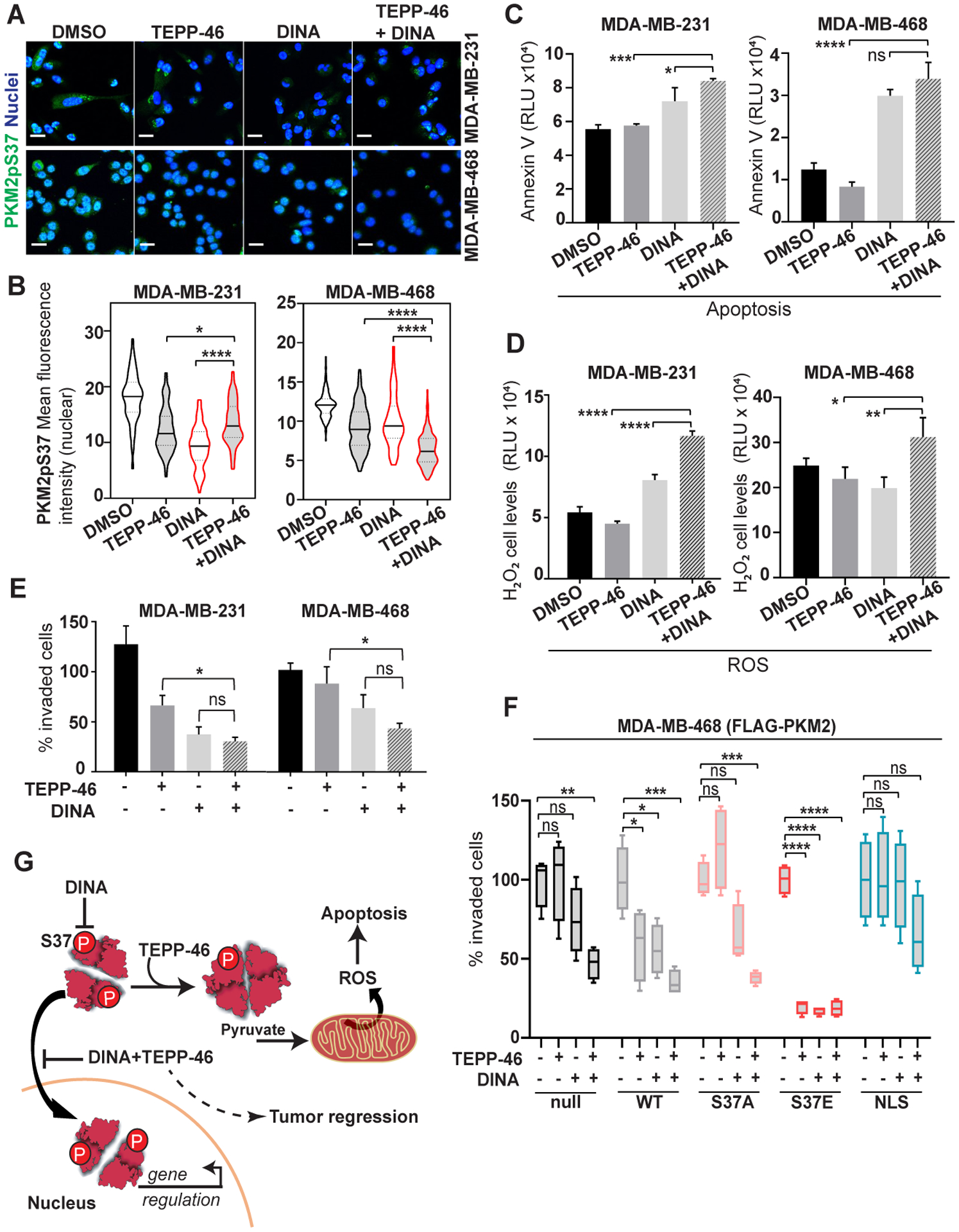Figure 7:

Dinaciclib and TEPP-46 small molecule combination treatment synergistically diminishes PKM2 phosphorylation and its regulatory effects in TNBC cells. A), B) Immunofluorescence analysis of nuclear PKM2pS37 and total PKM2 in TNBC cells treated with Dinaciclib (15 nM) or TEPP-46 (10 uM) or their combination; Nuclear staining, Hoechst 33342 (blue); Scale bar, 20 μm. C) Apoptosis and D) detection of ROS levels in TNBC cells treated with Dinaciclib (100 nM) or TEPP-46 (5 uM) or their combination for 20 hours. Bars, mean values, n = 3; error bars, SD; one-way ANOVA (Tukey’s HSD), *P < 0.05, **P = 0.002, ***P = 0.0002, ****P < 0.0001; ns, nonsignificant. Matrigel invasion assay of E) TNBC cells or F) MDA-MB-468 cells expressing wild-type PKM2 (WT), PKM2 S37 mutants (S37A, S37E) and the PKM2-NLS fusion, treated with Dinaciclib (2.5 nM) or TEPP-46 (5 uM) or their combination. One-way ANOVA (Tukey’s HSD), *P < 0.05, **P = 0.002, ***P = 0.0002, ****P < 0.0001; ns, nonsignificant. G) Schematic representation of a model proposing a therapeutic strategy to reduce the invasive properties of TNBC cells by targeting PKM2pS37.
